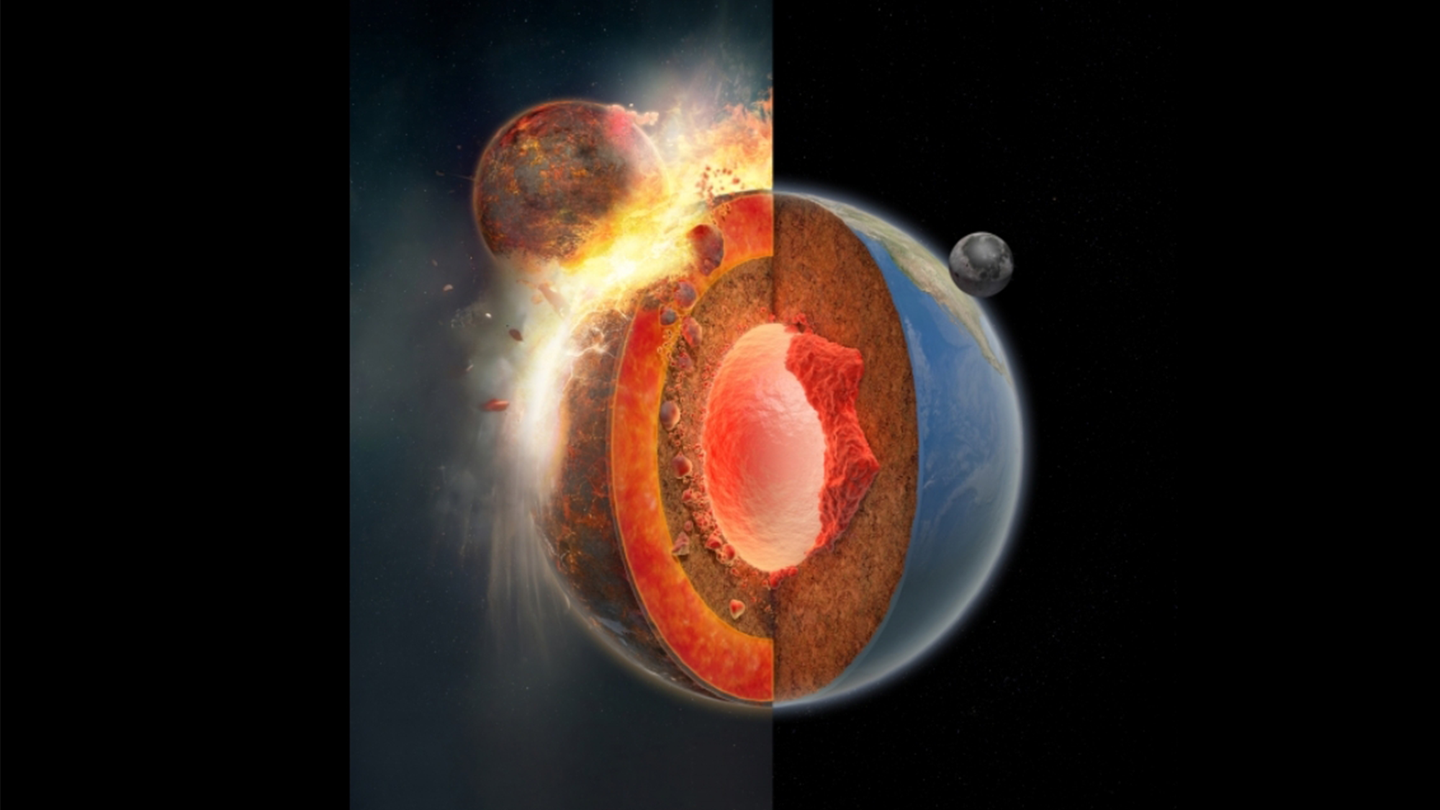Two giant blobs lurk deep within the Earth, but why?
Some scientists believe they could be responsible for plate tectonics.

Volcanoes and earthquakes are among Earth’s most dynamic and interesting forces, but their origins have remained a bit elusive. Plate tectonics are the result of a cosmic collision about 4.5 billion years ago, when an object about the size of the planet Mars slammed into Earth. The impact left behind some strange blobs within our planet that may have created plate tectonics, according to new computer modeling research. This new hypothesis is described in a study published May 7 in the journal Geophysical Research Letters.
What are these mystery blobs?
In the 1980s, geophysicists first discovered two continent-sized blobs of an unusual material deep near the center of the Earth. One blob is located beneath the Pacific Ocean and the other is under the African continent. Both are twice the size of our moon. They are so large that if they were placed on Earth’s surface, they would make a layer roughly 60 miles thick around the planet.
Formally known as large low-velocity provinces (LLVPs), they are also likely built of different proportions of elements than the mantle that surrounds them. A 2023 paper published in the journal Nature proposed that they are the remains of an ancient planet called Theia that collided with Earth in the same massive impact that created the moon. The study suggests that most of Theia was absorbed into our young planet, forming the LLVP blobs. The residual debris formed the moon.
[Related: Earth’s first continent? Probably a giant continental crust.]
“The moon appears to have materials within it representative of both the pre-impact Earth and Theia, but it was thought that any remnants of Theia in the Earth would have been ‘erased’ and homogenized by billions of years of dynamics (e.g., mantle convection) within the Earth,” Arizona State University astrophysicist and co-author of the Nature study Steven Desch said in a statement. “This is the first study to make the case that distinct ‘pieces’ of Theia still reside within the Earth, at its core-mantle boundary.”
The study posits that these blobs themselves then created our planet’s plate tectonics, which allowed life to flourish.
A new look at some very old minerals
This new paper builds on that study. Using computer modeling, they determined that around 200 million years after the impact with Theia, the submerged LLVP blobs may have helped create the hot plumes inside Earth that disrupted the surface. They breached the flat crust and allowed circular slabs to sink down in a process called subduction.
According to the team, it may explain why the Earth’s oldest minerals are zircon crystals that appear to have undergone subduction over 4 billion years ago and may have contributed to plate tectonics.
[Related: How old is Earth? It’s a surprisingly tough question to answer.]
“The giant impact is not only the reason for our moon, if that’s the case, it also set the initial conditions of our Earth,” California Institute of Technology geoscientists and study co-author Qian Yuan told The Washington Post.
The model raised numerous questions for some outside geologists, including whether or not the collision would have resulted in a recycling of Earth’s entire crust instead of plate tectonics. This process potentially occurred on our sister planet Venus billions of years ago. There are also some geochemical inconsistencies that cast doubt on the planet smashing theory as a whole, according to some scientists.
Are plate tectonics really necessary for life?
While they can be destructive to both property and lives, some scientists believe that plate tectonics helps Earth keep up the carbon cycle. This process moves carbon between microbes, plants, minerals, animals, and Earth’s atmosphere. The fourth most abundant element in the universe, carbon can also form the complex molecules on Earth like DNA and proteins. These building blocks of carbon make life on Earth possible.
However, another study published last year in Nature posits that mobile plate tectonics was not happening on Earth about 3.9 billion years ago when the first traces of life appeared on Earth.
[Related: Your ancestors might have been Martians.]
“We found there wasn’t plate tectonics when life is first thought to originate and that there wasn’t plate tectonics for hundreds of millions of years after,” University of Rochester paleogeologist John Tarduno said in a statement. “Our data suggests that when we’re looking for exoplanets that harbor life, the planets do not necessarily need to have plate tectonics.”
What is clear is that concrete answers to the question of how, when, and why life first emerged on our planet and what role the shifting plates played or didn’t play will endure.
